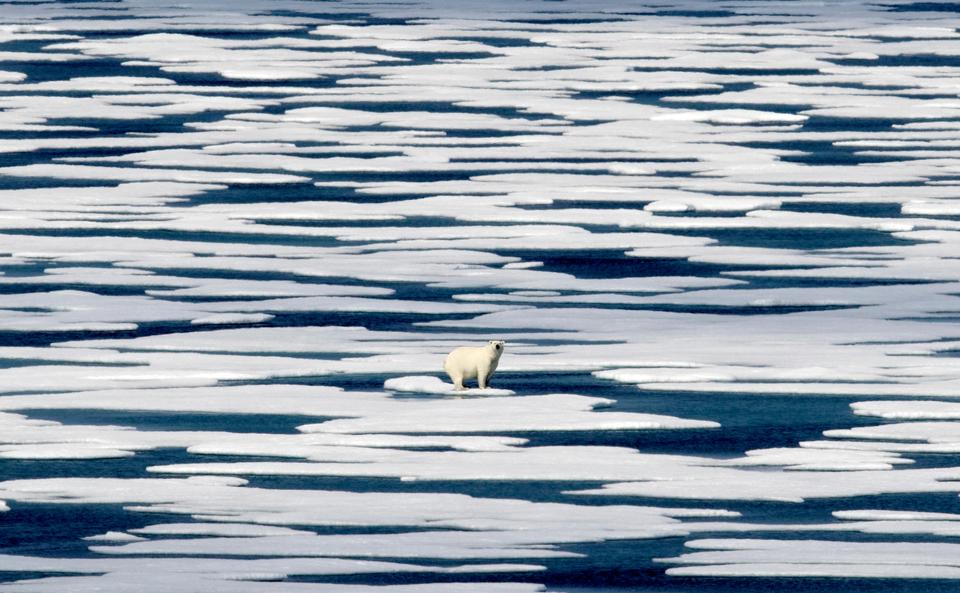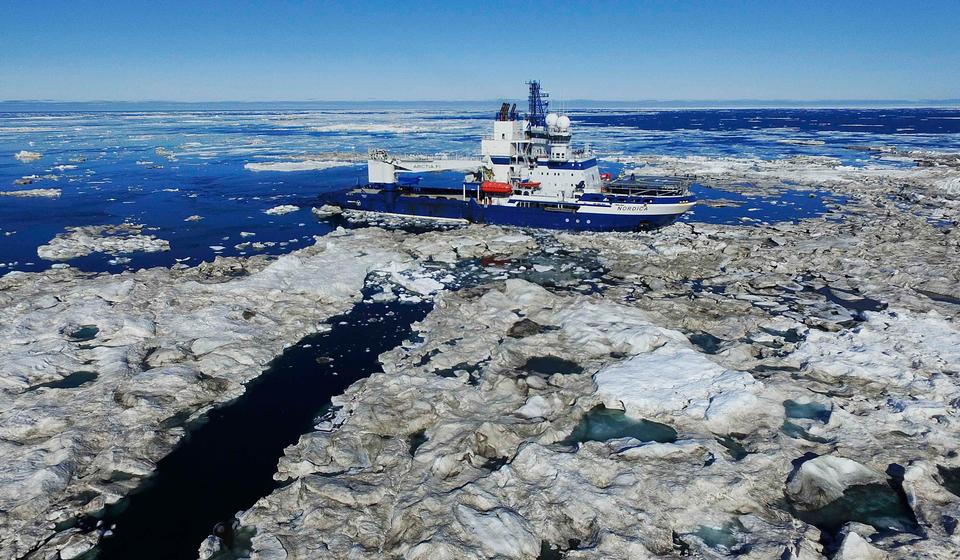The Arctic has a long history of industrial and commercial activities. Here’s how climate change is affecting its ecosystem, resource management tools and security politics.
The Norwegian Supreme Court ruled this week that the granting of oil permits for deeper drilling into the Arctic circle neither breached the constitutional right to a clean and healthy environment, nor violated the European Convention on Human Rights.
The landmark environmental case was led by Greenpeace and Nature and Youth Norway, who argued that drilling in the previously untouched areas posed serious threats to the delicate ecosystem. Other critics also pointed to the potential for heightened military tensions with Russia.
What does the Russian military have to do with a Norwegian case on environmental risk? More than you’d think. The Arctic has been a focus of environmentalists for many years, but as the melting ice makes previously inaccessible sea routes, minerals, and energy resources within reach, it has gained geopolitical salience in recent decades.
From droughts to wildfires to floods, climate change-related disasters are becoming more frequent and extreme. In the Arctic, which is warming 2 to 3 times faster than other places in the globe, the effects of climate change on its vulnerable communities and fragile ecosystem are dramatic.
Climate change, along with human activity like water and air contamination, overfishing, rise in ultraviolet radiation levels, and pollution from resource extraction are putting additional pressures on Arctic’s vulnerable inhabitants.
The changing numbers and distribution of animals like reindeer and salmon affect the availability of and access to herding, hunting, fishing, and foraging. Together, these impact the livelihoods, health, cultural identity and continuation of Indigenous peoples, and other residents.
And the damage doesn’t stop at the Arctic.
The melting Arctic is also accelerating climate change, as ice that can reflect about 80 percent of the sun’s radiation can only reflect about 20 percent as dark water. This creates a positive feedback loop whereby less ice creates more warming, which in turn leads to less ice. Permafrost thaw that releases methane might double warming from greenhouse gases, and the thawing of land ice could raise sea levels by more than a metre by the end of the century, affecting coastal communities and island nations thousands of kilometers away.
Polar geopolitics
As disastrous as the environmental and social implications of the melting Arctic are, many countries have turned their attention to its economic and political potential.The Arctic is estimated to hold about 13 percent of the world’s undiscovered oil resources, and 30 percent of its natural gas. It is also rich in base metals like iron ore, copper, and zinc; precious metals like platinum, gold and silver, all of which are becoming increasingly accessible by ship. Conflict over land and maritime boundaries are unlikely, as most have been delineated and resolved in a peaceful manner.
More contentious has been overlapping claims over the continental shelf (and deep seabed), and the applicability of the right of transit through Northwest Passage and the Northern Sea Route.
Russia and Canada claim partial or full sovereignty over the Northern Sea Route and Northwest Passage, respectively, which is disputed by the US. Even though the passages are not yet economically viable shipping routes, the number of ships using the passages is slowly increasing.
The economic and strategic potential of the geography is not lost on global powers, who have been investing heavily in research, natural resources, and the militarisation of the region.
Russia has reopened its Cold War-era military bases, and has undertaken expansion and modernisation efforts at the bases and its Northern Fleet.
In response, the US announced in 2019 that its Second Fleet, formed due to concerns about Russia, was fully operational. The Trump administration has stated that it views the Arctic as “an arena of global power and competition.”
In 2018, China declared itself a “near-Arctic state.” In addition to research expeditions since the 1990s, China has also invested in the Arctic mineral industry and infrastructure, increased energy cooperation with Russia, is planning to develop a nuclear-powered icebreaker, and revealed plans for a “Polar Silk Road'' in the Arctic. Though most of these endeavors appear economic in nature, they carry significant geopolitical implications in light of US-China rivalry.
The Arctic Council is the intergovernmental organisation presiding over Arctic matters. Its remit does not include military security.
Between competition and cooperation
Even though media today point to the military displays, drills, and occasional tensions between NATO and Russia to predict doomsday scenarios or a “new Cold War”, it doesn’t mean an Arctic conflict is imminent.Historically, the Arctic nations have prided themselves as “an area of unique international cooperation.” And it remains so. Strong international governance mechanisms--international forums like the Arctic Council, the Arctic Coastguard Forum, the Protection of the Arctic Marine Environment Group, and the International Maritime Organization; as well as bilateral agreements between countries--support cooperation and coordinated action in areas like oil spill and radiation/nuclear emergency response and search and rescue operations.
Experts predict that a conflict in the north is more likely to happen as a spillover from other tensions outside the Arctic. It remains to be seen how resilient the cooperation mechanisms can be in light of new challenges.



Sem comentários:
Enviar um comentário
1) Identifique-se com o seu verdadeiro nome e sem abreviaturas.
2) Seja respeitoso e cordial, ainda que crítico.
3) São bem-vindas objecções, correcções factuais, contra-exemplos e discordâncias.